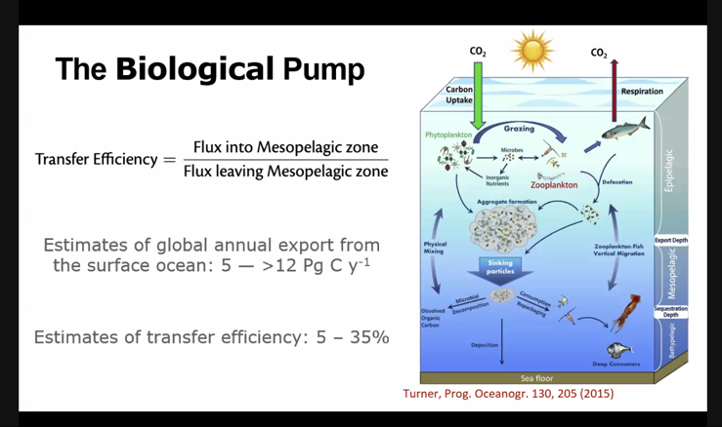By Maeve Goldberg, 2023 Sustainable Tar Heels Research Translation Intern
Adrian Burd, a professor in the Department of Marine Sciences at the University of Georgia, models how marine particles move from the surface to the deep ocean, a process with implications for understanding ocean carbon storage. Oceans are often referred to as carbon sinks, as they can store carbon from the atmosphere. Carbon sinks can mitigate the impacts of climate change. Burd recently presented his work at UNC Department of Earth, Marine, and Environmental Sciences’s Fall 2023 Colloquium Series.
Burd defined marine particles as organic material composed of phytoplankton cells, fecal matter and detritus, which can range in size from miniscule to visible clumps. As these particles sink through ocean layers, they serve as food and fuel for ocean organisms. This process of sinking and decomposition of particles in the deep ocean is known as the biological pump, a key feature in the ocean’s intake and storage of carbon. Carbon sediment which reaches the ocean floor can be stored for millennia.
Scientists estimate that 90% of particles reaching the oceans mesopelagic zone, a zone with little light that begins 650 feet below the surface, are recycled there. However, it is challenging to estimate how much material is entering and how much eventually sinks below to the even deeper, darker zones.
Because data collection across the ocean is challenging, advanced modeling techniques fill knowledge gaps. Burd stressed the significance of incorporating biologic and living factors into existing climate models, which can have a significant impact on the particle dynamics. For example, by eating and excreting particles, fish can produce organic or inorganic carbon regularly, and the number of fish interacting with particles in the mesopelagic is always changing.
Burd’s research continues to inform more accurate, responsive modeling of ocean particles and their journey from the surface to the deep ocean. Understanding the factors affecting the flux and composition of these particles will be critical for monitoring the Earth’s carbon cycle and its impact on climate dynamics.

